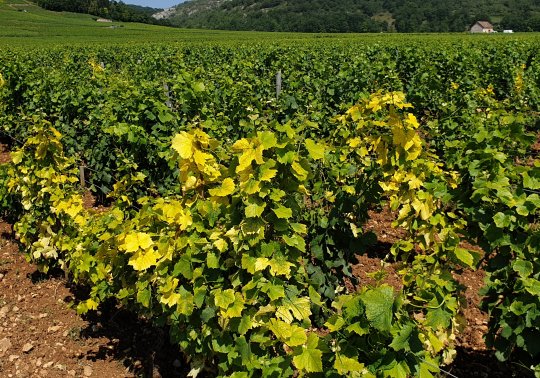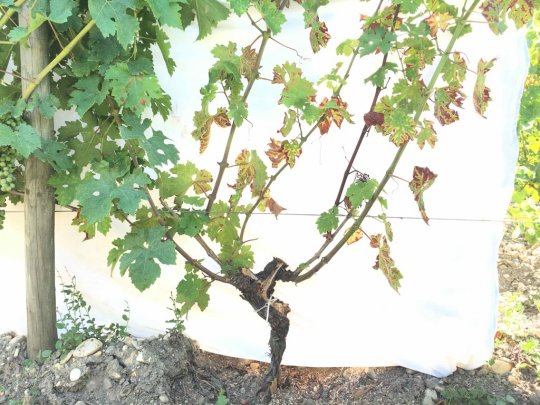Is the plot contaminated by yellow phytoplasmas?
Two diseases are elaborated here: Grapevine Flavescence Dorée and Bois noir. Each have identical symptoms and can only be differentiated using genetic analysis.
Flavescence Dorée is a phytoplasma jaundice transmitted by an insect: the leafhopper called Scaphoideus titanus. When prevalent in a region it can mean that one or more compulsory insecticide treatments to mitigate propagation is recommended. Moreover, if contamination remains high (more than 20%), pulling up the plot becomes compulsory. It is therefore crucial to keep tabs on this figure when organising an uprooting calander. That said, in most cases the risk is managed through rigorous surveillance of the zone, systematic uprooting of any diseased vines and closely monitoring the application of compulsory treatments.
Bois Noir is transmitted by the leafhopper Hyalesthes obsoletus. Given that this leafhopper does not reproduce on vines but on various surrounding plants, an insecticide treatment is impossible. The only possible biocontrol measures would involve eliminating nearby host plants such as nettles, bindweed, etc. The removal of infected vines is the only possibility and this is a compulsory measure in some regions.


